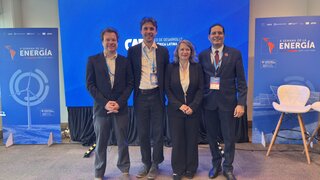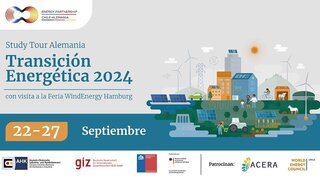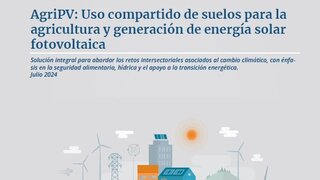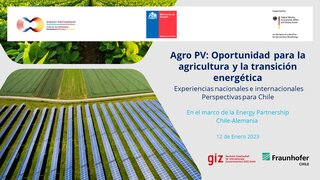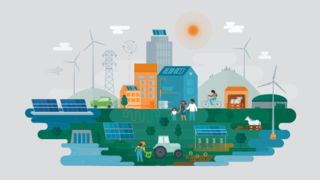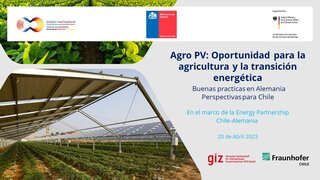Launch: Manual for the Development of Agrivoltaic Projects in Chile
The Energy Partnership Chile-Germany, together with the Ministry of Energy and the National Irrigation Commission (CNR), is pleased to announce the publication of the Manual for the Development of Agrivoltaic Projects in Chile: Design Models for 3 Crop Groups in Chile. This document is a technical guide that facilitates the development of Agrivoltaic (AgriPV) technology in Chile. Its objective is to strengthen the integration of renewable energy in agriculture, contributing to the efficient use of water resources and to the resilience of the sector in the face of climate change.
This work is the result of research carried out by Fraunhofer Chile and the Energy Center of the University of Chile. It also received technical support from CNR specialists and an interdisciplinary academic committee.
A practical and detailed roadmap
This guide has been developed as a practical and structured manual, designed to support professionals in the evaluation and conceptual design of AgriPV systems for self-consumption of energy, with emphasis on their integration with irrigation systems.
What will you find in this guide?
A step-by-step methodology: The manual presents a clear and simple 5-step flowchart that covers everything from defining crop requirements to the sizing and cost analysis of the AgriPV system.
Classification of crops for Chile: To facilitate design, the guide groups the main species in the country into three major groups according to their height and layout in the field: low-height vegetables and cereals (Group 1), taller extensive crops (Group 2), and fruit trees (Group 3).
AgriPV designs adapted to the national context: Four technical configurations are proposed and detailed, each optimized for a specific crop type and objective:
- Vertical System (BF): Ideal for Group 1 crops, compatible with large machinery.
- Elevated Fixed-North System (BF/ST): Recommended for Groups 1 and 2, focused on improving microclimate and water efficiency.
- Elevated Fixed-East/West System (ST): Designed for fruit trees (Group 3), offering climate protection.
- Elevated Tracking System (BF): Also for fruit trees (Group 3), maximizing energy generation.
Comprehensive and multidisciplinary analysis: The document thoroughly addresses all key dimensions of an AgriPV project, including agronomic, structural, electrical, and economic considerations.
Real case studies: The application of the methodology is illustrated through three detailed case studies in different regions of Chile: horticulture (Metropolitan Region), annual crops (Ñuble), and fruit production (Maule).
Who is this guide for?
This manual is a tool for:
- Farmers and producers seeking to innovate, improve the resilience of their crops, and diversify their income sources.
- Agronomists, electrical engineers, and irrigation consultants dedicated to the design and evaluation of projects.
- Renewable energy project developers and investors interested in the potential of agrivoltaics.
- Academics, researchers, and students in the agricultural and energy sectors.
This publication is a key initiative to promote sustainable rural development in Chile, demonstrating that food security and the energy transition can advance hand in hand.
We invite you to explore this comprehensive guide and become part of the transformation of the national agricultural sector.
The study was developed within the framework of the Energy Partnership Chile-Germany of GIZ, commissioned by the German Federal Ministry for Economic Affairs and Energy (BMWi), in collaboration with the Ministry of Energy of Chile and the National Irrigation Commission of Chile.
